Search Images
Browse Content (p. 1028)
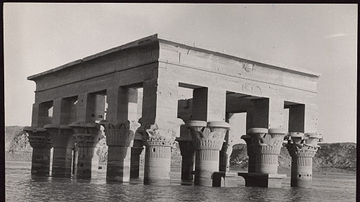
Image
Pavillion of Trajan, Submerged in the Nile
Pavillion of Trajan, in parts submerged by the Nile flooding on the Island of Philae, near Aswan.
Island Philae, Nubia, Egypt (October 1959)
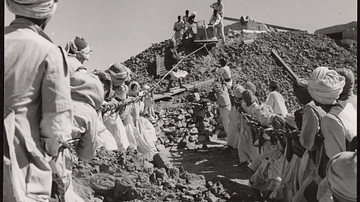
Image
Workers Dismantling Semna West temple
3500 years after its construction, the temple of the fortress of Semna West was dismantled in 1964 to be rebuilt in the gardens of the new Khartoum museum.
Semna West, Sudan (1964)

Image
Scaffolding Arch of Abu Simbel Great Temple, 1966
International campaign for the safeguarding of the Nubian monuments launched by UNESCO. In this photo, you can see the first arch of the scaffolding for the dome of the Great Temple of Abu Simbel under erection on its new site. Abu Simbel...
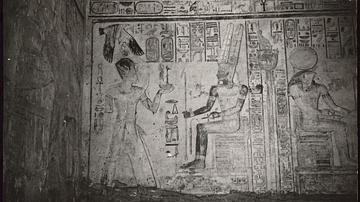
Image
Bas-Relief Inscriptions at Abu Simbel Great Temple
Great Temple (height: 110 feet / 33 meters, width: 127 feet / 38 meters) built under the 19th dynasty. On the facade, four colossuses about 67 feet / 20 meters high represent Rameses II (1290-1223 BCE). The complete work is 270 feet / 68...
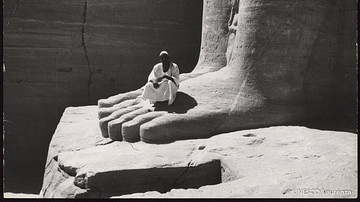
Image
Giant Foot at Abu Simbel
Great Temple (height: 110 feet / 33 meters, width: 127 feet / 38 meters) built under the 19th dynasty. On the facade, four colossuses about 67 feet / 20 meters high represent Rameses II (1290-1223 BCE). The complete work is 270 feet / 68...
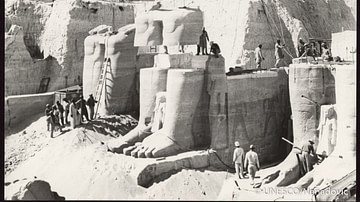
Image
Dismantling of Abu Simbel Statues, 1966
Dismantling of the statues of the Great Temple at Abu Simbel during the International Campaign for the Safeguard of the Nubian Monuments launched by UNESCO.
Abu Simbel, Egypt, Nubia (9 February 1966)
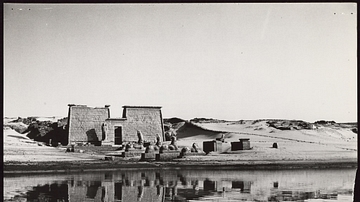
Image
Temple of Amun Ra and Ra Harmakhis
This temple was constructed in the Valley of the Lions by Ramesses II (c. 1250 BCE) in honour of the gods Amun Ra and Ra Harmakhis. The back of the temple is hollowed out in the rock. In the foreground stands the king's statue and a "dromos"...
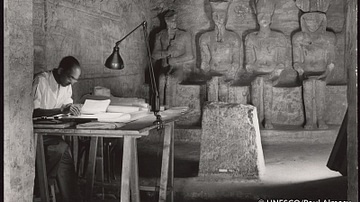
Image
Surveying Abu Simbel's Great Temple
An expert making a detailed survey in the sanctuary of the Great Temple. In the background —from left to right— the seated statues of Ptah, Amun, Rameses II and Harakhte.
Abu Simbel, Nubia, Egypt (March 1960)
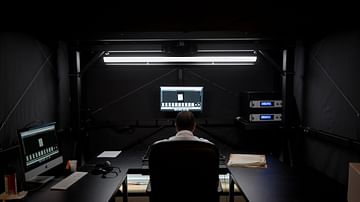
Image
UNESCO Archivist at Work
A rare view into the workspace of a member of the UNESCO Digital Archives team.
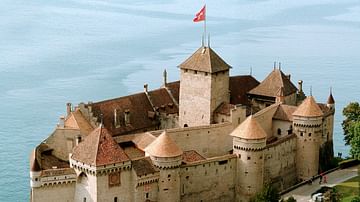
Image
Chateau de Chillon
Chateau de Chillon (Castle Chillon), Canton Vaud, Switzerland.